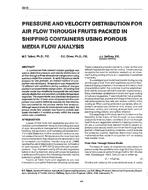Click here to purchase
While climate change mitigation and adaptation strategies are the world’s most prominent issue today, Lebanon, the Southern Mediterranean country, istrying to develop an integrated plan for urban development, energy supply, and environmental management. For years, the central authority in Lebanon has been unable to provide a steady production and distribution of electrical energy or even invest in the existing renewable resources. This has lead local authorities, or municipalities, to design their own plans despite the lack of accurate data and the absence of supporting measures initiated by the State. In the framework of the Covenant of Mayors (CoM) applications in the South Mediterranean region through the CES-MED program, it has been noticed that several Lebanese applicants wish to commit to the Covenant but are obstructed by many barriers which we shall highlight and evaluate in this paper. The paper also presents a complete case study of the Union of Municipalities of Shouf–Soueijany encompassing eight different municipalities. The case study establishes that the calculation of the total amount of greenhouse gas (GHG) emissions resulting from the overall energy consumption of the 8 municipalities (the Baseline Emission Inventory or BEI) will enable the union to comply with the CoM through the implementation of a Sustainable Energy Action Plan (SEAP). In order to identify the nature of the entities emitting CO2 in the scope of the municipal union, we have resorted to onsite data collection. The unavailability of official reliable statistics and references has made data collection and the determination of a baseline year asignificant obstacle to the research.
Citation: 3rd Intl Conf: Efficient Bldg Design
Product Details
- Published:
- 2018
- Number of Pages:
- 9
- Units of Measure:
- Dual
- File Size:
- 1 file , 1.5 MB
- Product Code(s):
- D-ICEB18-C004


